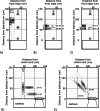Grab Bar Grasp Location During Bathtub Exit and Sit-to-Stand Transfers: Biomechanical Evaluation
- PMID: 40694815
- PMCID: PMC12306917
- DOI: 10.2196/69442
Grab Bar Grasp Location During Bathtub Exit and Sit-to-Stand Transfers: Biomechanical Evaluation
Abstract
Background: Grab bars are a multi-function bathing tool. While grab bars are commonly recommended by rehabilitation professionals, existing literature regarding optimal grab bar locations is focused on preference rather than function.
Objective: This study aimed to evaluate grab bar grasp location on 8 grab bar configurations during bathtub exit, with and without balance loss, and sit-to-stand (STS) from a bath seat.
Methods: Motion capture was used to evaluate grasp location during bathing activities in 28 older (65+ years) and 37 younger (18-35 years) adults. Grasp location was compared between age groups and balance loss conditions using ANOVA, and correlated with body height.
Results: Vertical grasp location varied from close to the bathtub rim to more than 1 meter above the bathtub rim (maximum 22.4 cm), while horizontal grasp location was close to the bathtub rim during bathtub exit, and close to the bath seat during STS. Young adult participants grasped 9.4% lower on vertical grab bars during perturbation trials than nonperturbation trials (P<.01). Body height was positively correlated with grasp height on a vertical grab bar during nonperturbation trials (r=0.67, P<.01), and negatively correlated with grasp distance on a low horizontal grab bar during STS (r=-0.37, P=.03).
Conclusions: Grab bar grasp location varied between proactive and reactive grasp scenarios and was linked to user height for some situations. These findings may be used to guide the selection of a grab bar installation location to support multiple bathing tasks.
Keywords: accessibility; accidental falls; bathroom; bathtub exit; home modification.
©Iris C Levine, Konika Nirmalanathan, Roger E Montgomery, Alison C Novak. Originally published in JMIR Rehabilitation and Assistive Technology (https://rehab.jmir.org).
Conflict of interest statement
Figures

References
LinkOut - more resources
Full Text Sources

